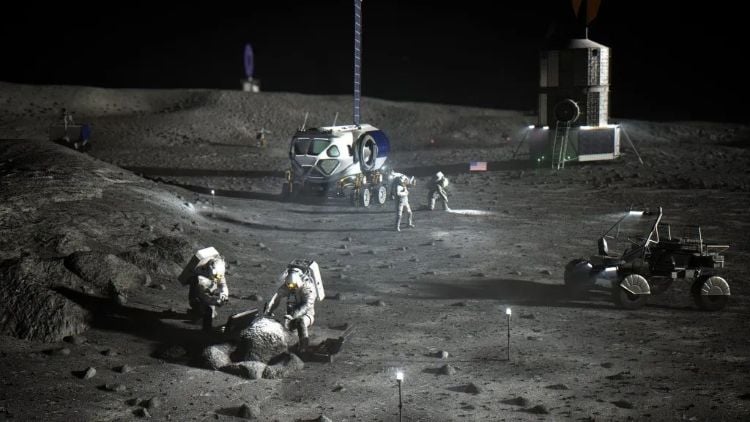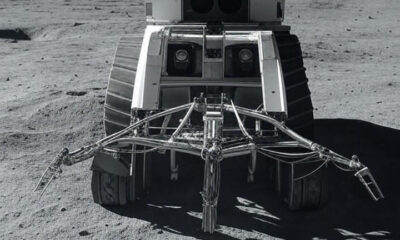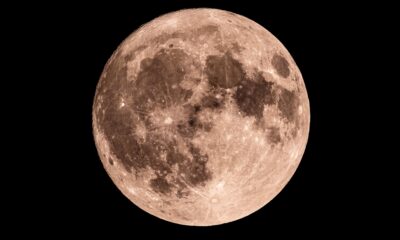Science
Researchers Enhance Lunar Habitats with Innovative Power Solutions

A team of researchers from the Republic of Korea has made significant strides in advancing lunar habitats through the innovative use of thermoelectric generators (TEGs). Their study, published in the journal Acta Astronautica, explores a new technique aimed at enhancing power efficiency and reliability for future lunar missions, addressing the challenges posed by the Moon’s harsh environment.
The researchers conducted a pioneering analysis of a novel TEG system specifically designed to operate under lunar conditions. This investigation focused on the extreme temperature variations between lunar day and night, which can reach as high as 121°C (250°F) during the day and drop to -133°C (-208°F) at night. Previous hypotheses suggested that such drastic temperature differences could improve the efficiency of TEGs, a concept known as transient-state operation.
The primary objective of the study was to evaluate the potential of switching heat storage (HS) systems, referred to as multiple-HS systems, to facilitate this transient-state operation on the lunar surface. The researchers concluded that implementing a multiple-HS system could lead to a remarkable 48.9 percent increase in power generation, indicating that the temperature extremes on the Moon could significantly benefit TEG performance and support long-term lunar habitats.
In the context of deep space exploration, the researchers emphasized that establishing human bases on the Moon and Mars has garnered global interest. As highlighted by scientists involved in the Artemis project, a manned lunar base is crucial for future missions throughout the solar system. Consequently, ensuring a reliable power supply for such bases has become a focal point of this research.
While the study also explored alternative power sources, including Radioisotope Thermoelectric Generators (RTGs), it raised concerns about their suitability for long-term lunar missions. RTGs have successfully powered instruments left on the Moon during the Apollo missions and are currently utilized by NASA’s Curiosity and Perseverance rovers on Mars. NASA plans to employ RTGs in its upcoming Dragonfly mission, set to launch in July 2028.
The researchers briefly examined the potential of solar and nuclear power as viable options for lunar energy. Nuclear fission reactors have previously been proposed for use on the Moon, aligning with NASA’s goal of establishing a sustainable human presence on the lunar surface through the Artemis program. This ongoing development of technologies on the Moon not only aims to support long-term habitation but also lays the groundwork for future crewed missions to Mars, as outlined in NASA’s Moon to Mars Architecture.
A reliable power source on the lunar surface reduces the dependency on transporting energy from Earth, promoting a practice known as in situ resource utilization (ISRU). In this scenario, TEGs harness the extensive temperature range on the lunar surface for their energy needs. As humanity advances towards establishing permanent settlements beyond Earth, studies like this underscore a growing interest in leveraging Earth-based technologies for extraterrestrial living.
The implications of this research are profound, suggesting that TEGs could be instrumental in powering future lunar habitats until more advanced and reliable systems are developed. As the exploration of space continues to evolve, the role of thermoelectric power generation in enhancing lunar habitats will increasingly come into focus, paving the way for humanity’s extended presence beyond Earth.
-

 Technology5 months ago
Technology5 months agoDiscover the Top 10 Calorie Counting Apps of 2025
-

 Health3 months ago
Health3 months agoBella Hadid Shares Health Update After Treatment for Lyme Disease
-

 Health3 months ago
Health3 months agoErin Bates Shares Recovery Update Following Sepsis Complications
-

 Technology4 months ago
Technology4 months agoDiscover How to Reverse Image Search Using ChatGPT Effortlessly
-

 Technology1 month ago
Technology1 month agoDiscover 2025’s Top GPUs for Exceptional 4K Gaming Performance
-

 Technology3 months ago
Technology3 months agoElectric Moto Influencer Surronster Arrested in Tijuana
-

 Technology5 months ago
Technology5 months agoMeta Initiates $60B AI Data Center Expansion, Starting in Ohio
-

 Technology5 months ago
Technology5 months agoRecovering a Suspended TikTok Account: A Step-by-Step Guide
-

 Health5 months ago
Health5 months agoTested: Rab Firewall Mountain Jacket Survives Harsh Conditions
-

 Lifestyle5 months ago
Lifestyle5 months agoBelton Family Reunites After Daughter Survives Hill Country Floods
-

 Health3 months ago
Health3 months agoAnalysts Project Stronger Growth for Apple’s iPhone 17 Lineup
-

 Technology4 months ago
Technology4 months agoHarmonic Launches AI Chatbot App to Transform Mathematical Reasoning





















